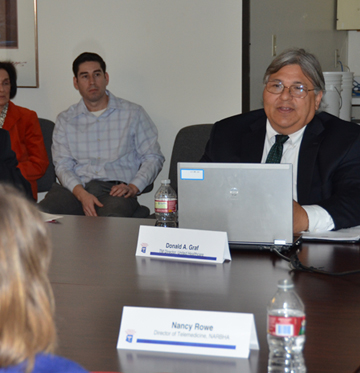One of the largest exhibitors at the Las Vegas Consumer Electronics Show is UnitedHealthcare. The nation’s giant health insurer has had a 3,000 square-foot booth at the show each year for the last four. But of course, they’re not there to show off their latest tele-gadget.
They are there to promote the benefits of telemedicine, telehealth and other tele-technologies that are closing the gap in access to health care.
“We have a long history of supporting the innovative use of technology to help people make healthier decisions; expand access to efficient, high–quality care; reduce cost and improve the health of the nation,” says Don Graf, telemedicine director for UnitedHealthcare in Arizona and New Mexico, where he promotes the expansion of telemedicine services. “We are a leader in supporting innovative use of new technology to further health care modernization and reform."
“There is no question in our minds, and in the minds of the insurance community, that the health care gap is growing exponentially and is most acute in rural and frontier communities. Expanding the use of telehealth and telemedicine will create efficiencies that can lead to timely access to care, and improve the health care experience - improvements that otherwise might not occur.”
Graf is a member of the Arizona Telemedicine Council, a group of legislators, health care providers, and business and agency leaders who exchange information and report their experiences to the Arizona Legislature. He also serves on the board of the New Mexico Telehealth Alliance.
And he is a member of the Washington, D.C.-based Alliance for Connected Care, a bipartisan group established to help educate policy makers on the cost-savings that can be achieved by eliminating outdated rules preventing the expanded use of telemedicine and telehealth. Their effort has taken time and patience, Graf says, “but they’re starting to get it.”

UnitedHealthcare uses telemedicine technology to deliver clinical services to more than 300 Arizona children with complex neurology and orthopedic issues, who are enrolled in Children’s Rehabilitation Services (CRS), part of the Arizona Health Care Cost Containment System, the state’s Medicaid program.
CRS data from 2014 show significant savings from services provided by telemedicine:
- $28,800 in travel expenses avoided by doctors who saw patients via videoconferencing
- $150,800 in payer costs, by reducing rural patient transport to urban facilities
- $54,000 in families’ lost wages by avoiding travel
In addition, parents’ missed work hours were reduced by nearly 2,300 hours, and missed school time was reduced by 1,700 hours. What’s more, 91 percent of parents rated telemedicine services as good or excellent.
“We want to share the telemedicine story with all the providers that we contract with, and help those interested get on board,” Graf says. “Our policy – for services deemed appropriate by the physician – is to reimburse telemedicine services the same as if they were face-to-face.
“We believe advancing health care through practical innovation includes empowering consumers, improving quality and access, and building better systems to drive effectiveness and affordability. Whether it’s health and fitness, preventive care, or treatment, we believe these new technologies are absolutely the wave of the future.”

